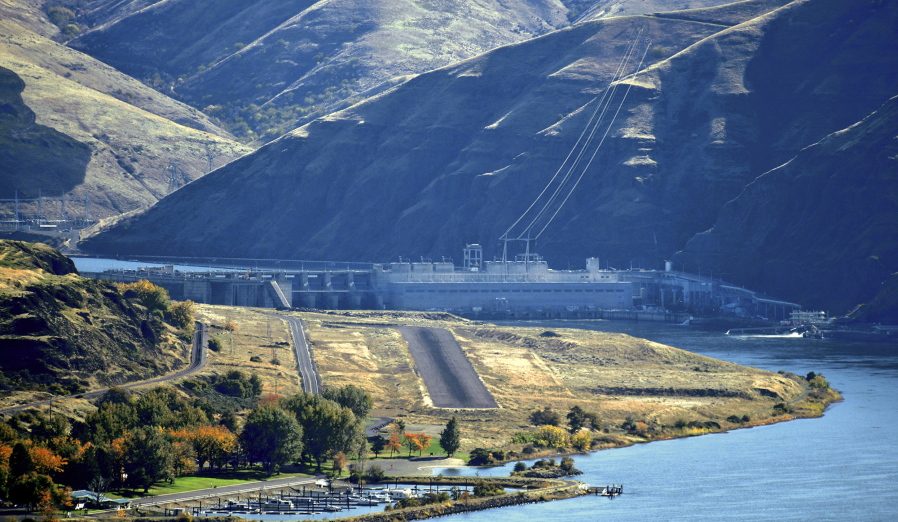Flooding in the Columbia River Basin is expected to increase dramatically in scale over the next half decade as the climate warms, according to new research from Oregon State University.
The severity of floods large and small — on the Columbia, Willamette and Snake rivers, along with hundreds of smaller tributaries — will increase and, in some places, the flooding season will grow longer.
That’s according to a new study from researchers at the university, published last month in the journal Hydrology and Earth System Science.
“The flood you’re used to seeing out your window once every 10 years will likely be larger than it has been in the past,” the study’s lead author, Laura Queen, a research assistant at OSU’s Oregon Climate Change Research Institute, said in a statement.
Queen ran simulations using streamflow data collected from nearly 400 sites throughout the Columbia River Basin and western Washington. The simulations included data from 1950 to 1999 and expected streamflow from 2050 to 2099.
“This was the best and most complete set of data,” said co-author Philip Mote, a professor in the College of Earth, Ocean, and Atmospheric Sciences and dean of the Graduate School at OSU. “It shows that the magnitude of one-, 10- and 100-year floods is likely to go up nearly everywhere in the region. These are profound shifts.”
The Willamette River saw the biggest bumps in flood severity in simulations, with 50 to 60 percent increases in 100-year flood scenarios. Parts of the Snake River could see a 40 percent increase in 10-year floods and a 60 percent increase in 100-year floods.
The season for flooding on the Snake, now primarily confined to the spring, could start as early as December or January.
The Columbia River Basin and much of the Northwest have seen frequent flooding historically. The Vanport flood in 1948 essentially wiped out one of Portland’s largest African-American communities at the time. Floods on the Chehalis River in Washington have forced the closure of Interstate 5 twice in the past 15 years. High water on the Willamette River in 1996 and 2019 caused millions in damages.
The simulations did not factor in flood mitigation efforts, like the extensive system of dams throughout the basin, but Mote said the changes are large enough that they would likely overwhelm any efforts to curb them.
“We don’t know how much of this increased flood risk can be managed through mitigation measures until we study the issue further,” he said. “But managing a 30 percent to 40 percent increase, as is predicted for many areas, is clearly beyond our management capabilities.”
One of the primary drivers for the expected shift is the warming climate. As temperatures climb, precipitation is more likely to fall as rain rather than snow. With smaller snowpacks, rivers and streams will see higher flows earlier in the season. The snowpack in the upper part of the basin, in Canada, is not likely to see large changes in volume, but the snow there will melt faster, researchers found.
Mote said the obvious next step is to use the same simulations to model what will happen with the existing mitigation measures in place.
“This work provides information and impetus for the people who manage flood risk,” he said. “We’ll need to know how much of this can be mitigated by existing flood control.”



